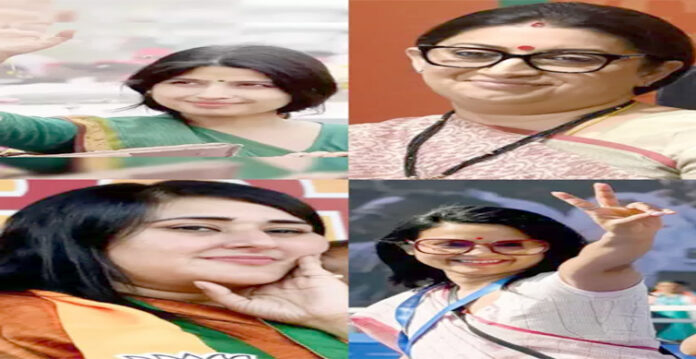In the recent Lok Sabha elections, a total of 73 women emerged victorious, marking a slight decline from the 78 elected in 2019. West Bengal leads with 11 female MPs, the highest among all states. This year, 797 women contested the elections, with the BJP fielding the highest number at 69, followed by the Congress with 41.
This election is notable as the first since the passage of the women’s reservation bill in Parliament, which aims to reserve one-third of seats in the Lok Sabha and state assemblies for women. However, this law has not yet come into effect.
According to Election Commission data, 30 of the BJP’s female candidates won, compared to 41 in 2019. The Congress saw 14 women candidates win, a decrease from 23 in the previous election. The Trinamool Congress (TMC) secured 11 seats for women, maintaining a strong presence, while the Samajwadi Party’s women secured four seats, and the DMK three. The Janata Dal United (JDU) and Lok Janshakti Party (LJP) each had two female winners.
Also Read: Triumph of Diversity: Muslim Candidates Shine in Lok Sabha Polls
The 18th Lok Sabha will feature 13.44 percent female MPs, one of the highest proportions since 1952. Although lower than the 17th Lok Sabha’s record of 78 women, it still surpasses the 16th Lok Sabha’s 64 female members and the 15th Lok Sabha’s 52.
Prominent winners this year include BJP’s Hema Malini, TMC’s Mahua Moitra, NCP’s Supriya Sule, and SP’s Dimple Yadav, all of whom retained their seats. Newcomers like Kangna Ranaut and Misha Bharati also garnered significant attention with their victories.
Among the youngest winners were Samajwadi Party’s 25-year-old Priya Saroj from Machhlishahr and 29-year-old Iqra Choudhary from Kairana. Additionally, the Naam Tamilar Katchi party achieved notable gender representation, with 50 percent of their candidates being women.
The comparison with the 2019 elections highlights a minor decline in the number of elected female MPs, yet it underscores ongoing efforts and challenges in achieving greater gender representation in Indian politics.
(This story is sourced from a third-party syndicated feed. Raavi Media takes no responsibility or liability of any nature. Raavi Media management/ythisnews.com can alter or delete the content without notice for any reason.)


